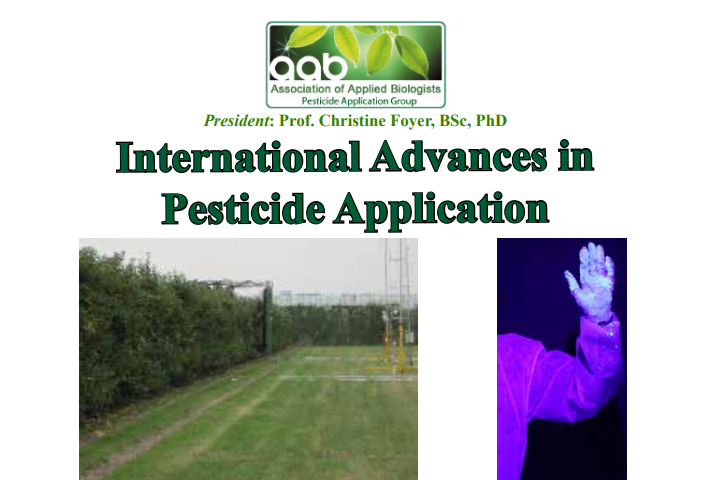Drift, deposition uniformity and swath width of two drone models according to the flight height


Drift, deposition uniformity and swath width of two drone models according to the flight height
U R ANTUNIASSI1, R G CHECHETTO2, A A B MOTA2, F K CARVALHO2, I F BORGES3, J F MAGGIONI3 and P I T SILVA3
1Sao Paulo State University, UNESP, Av. Universitária, 3780, 18610-034, Botucatu, SP, Brazil
2AgroEfetiva, R. Lourival Ferreira, 11, 18608-853, Botucatu, SP, Brazil
3Corteva Agriscience, Alameda Itapecuru, 506, Alphaville, Barueri, SP, Brazil, 06454-080
Corresponding Author Email: ulisses.antuniassi@unesp.br
This work aimed to determine deposition uniformity, swath width and drift of two drone models at two flight heights. Drift was evaluated up to 64 m downwind. The effective swath width was measured using a string spectrophotometer. Deposition uniformity evaluation used a 60-point matrix of mylar cards. Drift and deposition were measured by spectrophotometry of target washing solutions. The drone models DJI MG-1P (10 kg payload) and DJI T-16 (16 kg payload) were equipped with AIXR 110015 nozzles producing medium to coarse droplets and calibrated to 10 L ha-1. The results showed that both drones spraying with overlapped swaths and with a 5-m swath width offered Coefficient of Variation (CV) like standard agricultural aircrafts. If spraying without overlapping the swaths both generated high deposition variability. In all applications some amount of drift was found on the last collector (64 m). Flight height was the most important factor affecting drift.
Key words: UAV, spray application, droplet spectra, aerial application, air induction nozzles
Antuniassi, U. R. et al. ASSOCIATION OF APPLIED BIOLOGISTS. ASPECTS OF APPLIED BIOLOGY v.147. International Advances in Pesticide Application. Münster, Germany. 2022.

